- Home
- Paul Christopher
Templar Conspiracy
Templar Conspiracy Read online
Table of Contents
Title Page
Copyright Page
PART ONE - OVERTURE
Chapter 1
Chapter 2
Chapter 3
Chapter 4
Chapter 5
Chapter 6
Chapter 7
Chapter 8
Chapter 9
Chapter 10
Chapter 11
Chapter 12
Chapter 13
Chapter 14
Chapter 15
Chapter 16
Chapter 17
PART TWO - OPUS
Chapter 18
Chapter 19
Chapter 20
Chapter 21
Chapter 22
Chapter 23
Chapter 24
Chapter 25
PART THREE - INTERMEZZO
Chapter 26
Chapter 27
Chapter 28
Chapter 29
Chapter 30
PART FOUR - FINALE
Chapter 31
Chapter 32
Chapter 33
Chapter 34
Chapter 35
Chapter 36
Chapter 37
Chapter 38
Teaser chapter
A CONSPIRACY DECODED
Holliday stared at the computer screen for a long moment, as though it could somehow give him the answer.
“What was it the man in the confessional said to Leeson? Something about the White House,” said Holliday.
“He talked about killing Our Father, about it all being a ‘thimblerig’ and the ‘poor doomed bastard in the White House,’” answered Brennan.
“Who were the last three Popes?” Holliday asked suddenly.
“If you don’t include John Paul I, who died after only a month, there were Paul VI, John Paul II and Benedict XVI.”
“Who was invited to the funeral?”
“Every head of state in the world.”
“The president?”
“Of course.”
“He was in attendance for all three?”
“Yes.”
“Then that’s got to be it,” said Holliday.
“That’s got to be what?” Peggy asked, frustrated.
“Dear God,” whispered Brennan, seeing where Holliday was going. “They’re going to kill the President of the United States.”
Also by Paul Christopher
Michelangelo’s Notebook
The Lucifer Gospel
Rembrandt’s Ghost
The Aztec Heresy
The Sword of the Templars
The Templar Cross
The Templar Throne
SIGNET
Published by New American Library, a division of
Penguin Group (USA) Inc., 375 Hudson Street,
New York, New York 10014, USA
Penguin Group (Canada), 90 Eglinton Avenue East, Suite 700, Toronto,
Ontario M4P 2Y3, Canada (a division of Pearson Penguin Canada Inc.)
Penguin Books Ltd., 80 Strand, London WC2R 0RL, England
Penguin Ireland, 25 St. Stephen’s Green, Dublin 2,
Ireland (a division of Penguin Books Ltd.)
Penguin Group (Australia), 250 Camberwell Road, Camberwell, Victoria 3124,
Australia (a division of Pearson Australia Group Pty. Ltd.)
Penguin Books India Pvt. Ltd., 11 Community Centre, Panchsheel Park,
New Delhi - 110 017, India
Penguin Group (NZ), 67 Apollo Drive, Rosedale, North Shore 0632,
New Zealand (a division of Pearson New Zealand Ltd.)
Penguin Books (South Africa) (Pty.) Ltd., 24 Sturdee Avenue,
Rosebank, Johannesburg 2196, South Africa
Penguin Books Ltd., Registered Offices:
80 Strand, London WC2R 0RL, England
First published by Signet, an imprint of New American Library,
a division of Penguin Group (USA) Inc.
First Printing, January 2011
eISBN : 978-1-101-47782-3
Copyright © Paul Christopher, 2011 All rights reserved
REGISTERED TRADEMARK—MARCA REGISTRADA
Without limiting the rights under copyright reserved above, no part of this publication may be reproduced, stored in or introduced into a retrieval system, or transmitted, in any form, or by any means (electronic, mechanical, photocopying, recording, or otherwise), without the prior written permission of both the copyright owner and the above publisher of this book.
PUBLISHER’S NOTE
This is a work of fiction. Names, characters, places, and incidents either are the product of the author’s imagination or are used fictitiously, and any resemblance to actual persons, living or dead, business establishments, events, or locales is entirely coincidental.
The publisher does not have any control over and does not assume any responsibility for author or third-party Web sites or their content.
The scanning, uploading, and distribution of this book via the Internet or via any other means without the permission of the publisher is illegal and punishable by law. Please purchase only authorized electronic editions, and do not participate in or encourage electronic piracy of copyrighted materials. Your support of the author’s rights is appreciated.
http://us.penguingroup.com
PART ONE
OVERTURE
1
It was Christmas Day in Rome and it was snowing. Snow was a rare occurrence here but he was ready for it. He had kept his eyes on the weather reports for the past ten days. It was always best to be prepared.
The name on his American passport was Hannu Hancock, born of a Finnish mother and an American father in Madison, Wisconsin, where his father taught at the university and his mother ran a Finnish craft store. Hancock was forty-six, had attended East High School, followed by a bachelor’s and then a master’s in agronomy at the University of Wisconsin-Madison. His present job was as a soil-conservation biologist and traveling soil-conservation consultant with the U.S. Department of Agriculture. Hancock had been married for three years to a young woman named Janit Ferguson, who died of lung cancer. He was childless and had not remarried.
Not a word of this was true. Not even the people who hired him knew who he really was. He traveled under a number of passports, each with a different name and fully detailed biography to go along with it. The passports, along with a great deal of money, were kept in a safe-deposit box at Banque Bauer in Geneva. As alternates he kept several more passports and a secondary nest egg tucked away in a bank in Nassau, Bahamas, where he also owned a relatively small house in Lyford Cay—Sir Sean Connery was his closest neighbor—as well as a self-storage locker on Carmichael Road on the way to the airport. The Bahamas house was his usual destination after doing a job. It would be his eventual destination again, but he’d been told to remain available for another assignment in Rome sometime within the next six days.
Not for a minute did he consider failing, nor did he think about the enormity of the initial act he’d been hired to complete. He never failed; he never made mistakes. Remorse was an emotion unknown to him. Some people would have called him a sociopath, but they would be wrong. He was simply a man with a singular talent and he practiced it with enormous efficiency. He left the motive and morality of his task entirely in the hands of his employers. In his own mind he was nothing more than a technician, a facilitator for the needs of the people who hired him.
Hancock made his way down the Corso Vittorio Emanuele II in the lightly falling snow. He glanced at his watch. It was six thirty in the morning and it was still dark. Sunrise would be in an hour and four minutes. He still had plenty of time. He was wearing a white ski jacket purchased in Geneva, blue jeans from a vintag
e clothing store in New York and high-top running shoes from a store in Paddington, London. He had a pale gray backpack slung over his shoulder and tucked under his arm was a long, Christmas-wrapped box of the kind usually used for long-stemmed roses. On his head, covering his dark hair, he wore a white balaclava ski hat rolled up into a watch cap.
He’d seen virtually no one on his walk except for a few taxi drivers, and the steel shutters were pulled down over the entrances to the cafés, bars and small pizzerias along the way. Partly it was the unfamiliar snow on the ground and part of it was the day. Most people would be at home with loved ones, and the more pious would be preparing breakfast before heading out to Saint Peter’s Square for the apostolic blessing by the Pope, scheduled for noon.
Hancock reached the Via dei Filippini and turned into the narrow alley. Cars were angle-parked along the right-hand side, and the only spaces available were for the large nineteenth-century apartment block on the left. Hancock’s own little DR5 rental was where he’d left it the night before. He continued down the alley until he reached an anonymous black door on the right. Using the old-fashioned key he’d been provided, he unlocked the door and stepped inside.
He found himself in a small, dark foyer with a winding iron staircase directly in front of him. He began to climb, ignoring several landings, and finally reached the top. A stone corridor led to the right and Hancock followed it. The passage took several turns and ended at one of the choir lofts.
He looked down into the central part of the church eighty or ninety feet below. As expected, it was empty. Most churches in Rome, big and small, would be vacant this morning. Every worshipper in the city was hurrying to Saint Peter’s in time to get one of the good spots close to the main loggia of the church, where the Pope made his most important proclamations.
There was a narrow door at the left side of the choir loft. Opening it, Hancock was faced with a steep wooden staircase with a scrolled banister. He climbed the steps steadily until he reached the head of the stairs and the small chamber at the top. The floor of the chamber was made of thick Sardinian oak planks, black with age, and the walls were a complex mass of curving struts and beams of the same wood, much like the skeletal framework of a ship from the Spanish Armada; not surprising, since the framework was built by the best Italian shipwrights from Liguria in the late sixteenth century.
The framework supported the heavy outer masonry dome and allowed the much lighter inner dome to be significantly taller than what was built on churches at that time. A simple wooden staircase with banisters on both sides soared upward, following the dome’s curve and ending at the foot of a small round tower steeple that capped the dome.
Hancock climbed again, reaching the top of the dome, and then went up a narrow spiral staircase into the tower. He checked his watch. Still forty minutes until the sun began to rise. He dropped the heavy parcel and shrugged off the backpack. The trip from the outer door on Via dei Filippini to the tower had taken him eleven minutes. By his calculations the return journey would take no more than seven minutes, since he would be going down rather than up and he’d no longer be carrying the extra weight.
Before doing anything else Hancock took out a pair of surgical gloves and snapped them on. He opened the flap on the backpack and took out a wax paper-wrapped fried egg sandwich and ate quickly, methodically making sure that no crumbs fell onto the stone floor at his feet. As he ate he looked out over the city. The snow was coming down heavier now, easily enough to cover his tracks down the alley to the access door but not so heavily as to obscure vision. He finished the sandwich, carefully folded the wax paper and slipped it into the pocket of his ski jacket.
He set the alarm on his watch for eleven thirty, pulled the masklike balaclava over his face to conserve heat and slid down to the floor. Within three minutes he fell into a light, dreamless sleep.
The alarm beeped him awake at exactly eleven thirty. Before standing up he opened the backpack again and took out a loose-fitting white Tyvek suit that covered him from chin to ankles. It took him only a few moments to slip it on. The snow was still falling lightly, and in the suit and the white balaclava he would be invisible against the dull blur of the Christmas sky.
Hancock crouched over the backpack and removed a device that looked very much like a digital video camera. He stood up and with the viewfinder to his eye he scanned the northwestern skyline on the far side of the Tiber River. The range was still exactly 1,311.64 yards, but he’d wanted to check the windage. He’d guessed from the straight fall of the snow that there was virtually no breeze, but the Leupold rangefinder was sophisticated enough to account for hidden air currents as well as plot a ballistic line that computed the differential in height between him and the target. This was important, since the Chiesa Nuova and its tower steeple were more than three hundred feet higher than the target, which lay across the river from the Plain of Mars.
Hancock bent down and returned the rangefinder to the backpack. He then began to undo the Christmas wrapping, carefully folding the red-and-gold paper and sliding it into the backpack. He lifted the top of the box, revealing the basic components of an American CheyTac Intervention .408-caliber sniper rifle—to Hancock’s mind the greatest weapon of its kind ever made. He screwed on the stainless steel muzzle brake and suppressor, slipped the U.S. Optics telescopic sight onto its rails and slid the integral shoulder rest out of the stock. Finally he fitted the seven-round box magazine into its slot in the forestock.
The rifle was immense by most standards—fifty-four inches when assembled, or almost five feet long. The weapon had a built-in bipod toward the front of the rifle and a telescopic monopod at the rifle’s point of balance. Hancock chose neither. Instead he took a custom-made, sand-filled rest from the backpack and placed it on the capstones of the chest-high wall of the tower.
By kneeling on one leg he could bring the target to bear almost exactly. He looked at his watch. Five minutes to twelve. It would be soon now. He took his handheld Pioneer Inno satellite radio out of the backpack and plugged in the earbuds. The radio was tuned to CNN, which was carrying the apostolic blessing live, something the network did every year on Christmas Day.
According to the commentator more than sixty thousand people were gathered in Saint Peter’s Square to hear their sins forgiven. Based on the last four urbi et orbi blessings, Hancock knew that he had no more than a minute and ten seconds to find the target and take the shot. At two minutes to twelve a huge cheer went up in the square. Hancock tossed the radio into the backpack and rose to his firing position, placing the barrel just behind the suppressor on the sand pillow. He turned the knob on the telescopic sight two clicks and the target area jumped into view: the central loggia, or balcony, of St. Peter’s Basilica.
There were eight other people on the long balcony with His Holiness: two bishops in white vestments and miters; two priests in white cassocks with red collars; a sound man with a boom microphone; a cameraman; the official Vatican photographer, Dario Biondi; and a senior cardinal who held the large white-and-gold folder containing the blessing.
In the middle of it all was the Pope himself. He sat on a red-and-gold throne with a golden crosier, or shepherd’s crook, held in his left hand. He was dressed in white and gold vestments and a matching white-and-gold silk miter. Behind the throne, barely visible in the shadows of the doorway, Hancock could see several dark-suited members of the Vigilanza, the Vatican City security force.
At last, through the sight he saw the Pontiff’s lips begin to move as he started the short blessing: “Sancti Apostoli Petrus et Paulus: de quorum potestate et auctoritate confidimus ipsi intercedant pro nobis ad Dominum.”
A papal banner draped over the balcony lifted slightly in a light wind and Hancock adjusted the sight minutely. Below the balcony, unseen and unheard, the enormous crowd gave the obligatory response in unison: “Amen.”
Fifteen seconds gone.
Hancock wrapped his latex-gloved finger around the trigger as the Pope began the sec
ond line: “Precibus et meritis beatœ Mariae semper Virginis, beati Michaelis Archangeli, beati Ioannis Baptistœ, et sanctorum Apostolorum Petri et Pauli et omnium Sanctorum misereatur vestri omnipotens Deus; et dimissis omnibus peccatis vestris, perducat vos Iesus Christus ad vitam œternam.”
Twenty-five seconds gone.
The field of vision clear, a three-quarters profile; not the best angle for the job but good enough.
The crowd responded once again: “Amen.”
Thirty seconds gone. Through the telescopic sight Hancock saw the Pope visibly take a breath before beginning the third line of the blessing. His last breath.
Hancock fired.
The two-and-three-quarter-inch, missile-shaped, sharp-nose round traveled the distance between Hancock and the target at a muzzle velocity of 3,350 feet per second, reaching the Pope in just a fraction more than one and a half seconds.
Hancock waited until he saw the impact, striking the Pontiff in center mass, ripping through the chest wall and tipping the throne backward into the doorway of the balcony. Sure of his primary kill, Hancock then emptied the six-round magazine in an arc across the balcony, his object to create mayhem and as much confusion as possible. He succeeded.
With the task completed, he took down the rifle and laid it on the stone floor of the tower. He took a few moments to collect each brass casing and strip off the Tyvek suit. He put the shell casings into the pocket of his ski jacket, stuffed the Tyvek suit into his backpack and then took a small, clear plastic bag from his pants pocket.
The plastic bag and its contents had been sent to him by his employer, along with instructions regarding their use. He pulled open the zipper-top bag and tipped the contents onto the stone floor. The solid gold coin gleamed in the bitter winter light.
After he received it, Hancock had copied the image of the coin and taken it to a specialist in ancient coins. It was authentic, dated 1191. The name of the seated figure in the center of the piece was scrolled around it: al-Malik an-Nasir Yusuf Ayyub, a Kurdish soldier born in what was now Tikrit, Iraq, and known to the Western world as Saladin, the man who took back Jerusalem from the Crusaders and defeated Richard the Lionheart. With the coin in place he shrugged the backpack over his shoulders and headed downward from the tower, leaving the rifle behind.

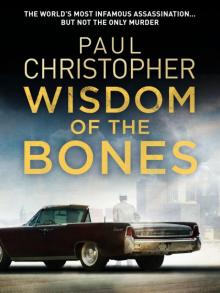 Wisdom of the Bones
Wisdom of the Bones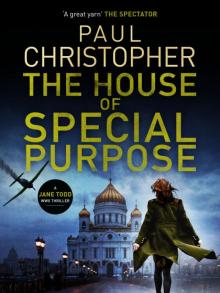 The House of Special Purpose
The House of Special Purpose The Second Assassin
The Second Assassin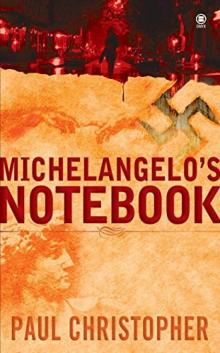 Michelangelo's Notebook
Michelangelo's Notebook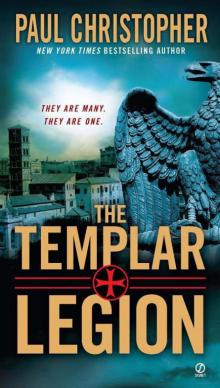 Templar Legion
Templar Legion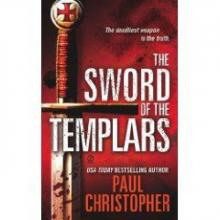 The Sword of the Templars t-1
The Sword of the Templars t-1 Red Templar
Red Templar The Aztec Heresy
The Aztec Heresy The Templar Legion
The Templar Legion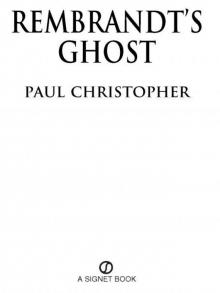 Rembrandt's Ghost
Rembrandt's Ghost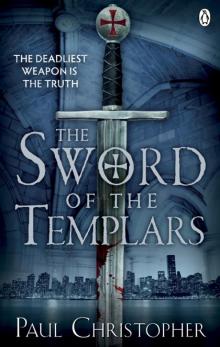 Sword of the Templars
Sword of the Templars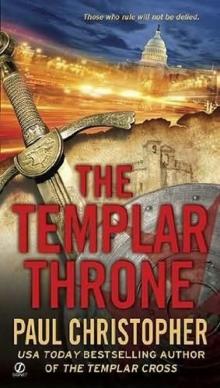 The Templar throne t-3
The Templar throne t-3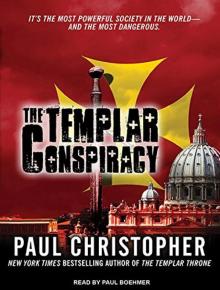 The Templar Conspiracy
The Templar Conspiracy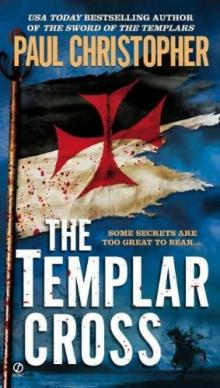 The Templar Cross t-2
The Templar Cross t-2 The Templar Legion t-5
The Templar Legion t-5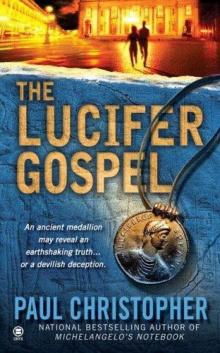 The Lucifer Gospel
The Lucifer Gospel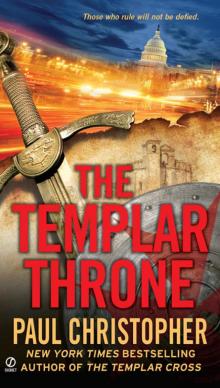 Templar Throne
Templar Throne Michelangelo_s Notebook fr-1
Michelangelo_s Notebook fr-1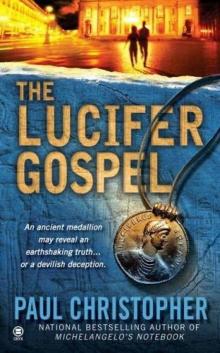 The Lucifer Gospel fr-2
The Lucifer Gospel fr-2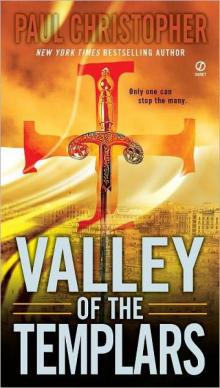 Valley of the Templars ts-7
Valley of the Templars ts-7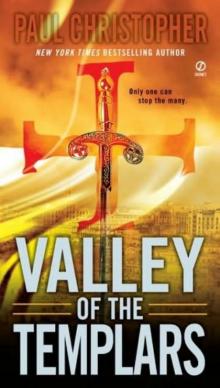 Valley of the Templars
Valley of the Templars Templar Cross
Templar Cross The Templar Throne
The Templar Throne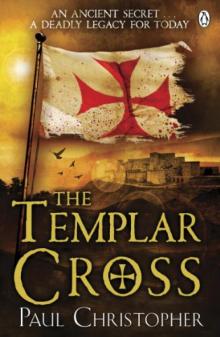 The Templar Cross
The Templar Cross Lost City of the Templars
Lost City of the Templars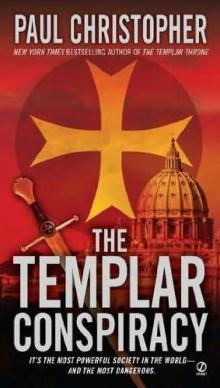 The Templar conspiracy t-4
The Templar conspiracy t-4 Templar Conspiracy
Templar Conspiracy